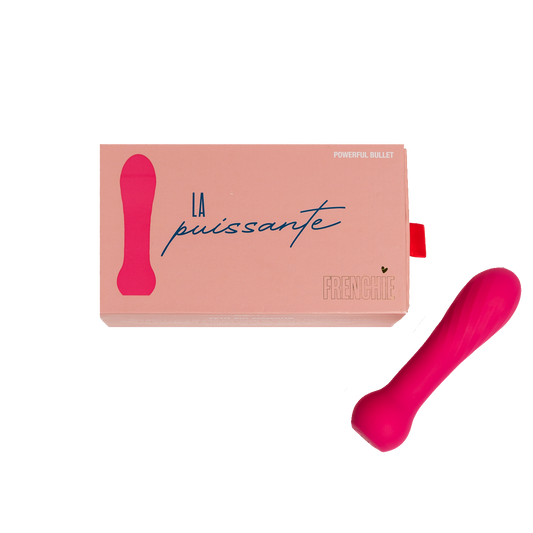26 September is World Contraception Day. Yes, there is a day for celebrating and raising awareness about the importance and use of contraception.
The choice of contraceptive is a very personal one - what works for one person may not be the best solution for another. The good news is that there are options. However, according to a report published by Family Planning NSW, there is a need for greater awareness among Australian people on the advantages and disadvantages of the different types of contraceptive methods available.
Knowing your options can help you make informed choices about your body. That’s why, in this article we discuss the 20 most common types of contraceptives methods to prevent pregnancy.
Of course, we also encourage you to discuss these options with your healthcare provider.

1. Condoms
Effectivity rate: 98% with perfect use
Cost estimate: on average $1 per condom
Condoms are the most commonly used and widely available type of contraceptive. In here we are referring to the external condom for application on the penis. The external condom acts as a barrier that prevents the sperm from reaching an egg. When used correctly, condoms are a highly effective contraceptive method.
Latex VS Non-latex
The variance in the effectiveness and cost estimate of condoms comes down to the difference between latex and non-latex condoms. As the name suggests, the main difference is the material of the condom. Latex is a very flexible material that can stretch up to 800% without running the risk of breaking. Meanwhile, non-latex condoms are typically made out of polyurethane or polyisoprene, which are less flexible materials.
Which one is better at preventing pregnancy?
Research shows that latex condoms are more effective at preventing pregnancy. As such, they are recommended as the safer option.
Pros of Using Condoms
- Highly effective at preventing pregnancy
- Widely available
- Cost-effective
- Non-hormonal contraceptive method
- Effective against STIs and STDs
- Suitable for everyone
Cons of Using Condoms
- May break when used with oil-based lubes (choose water-based lubes instead)
- May develop a latex sensitivity if you don’t use hypoallergenic latex condoms
2. Oral Contraceptive Pill
Effectivity rate: 91%
Cost estimate: Between $6 and $45 per month
Different from condoms, the pill is a hormonal contraceptive methods. This means using external hormones to safely surpass ovulation. When using the pill, no new eggs will be released for the sperm to fertilize. At the same time, the hormones also make the cervix mucus thicker, preventing the sperm from reaching the eggs.
There are two types of pill: the combined oral contraceptive pill that contains the hormones oestrogen and progesterone and the progesterone only pill. You take one pill every day at the same time for 21 days, stop for 7 days, then start the 21-days-on/7-days-off cycle again.
Pros of Using Oral Contraceptive Pill
- Highly effective when used correctly
- Widely available (often with a prescription)
Cons of Using Oral Contraceptive Pill
- You have to take the pill every day at the same time in order for it to be effective
- Doesn’t protect against STIs and STDs
- May lead to side effects such as headaches, nausea, and changes to menstrual bleeding
- It can be quite expensive when not covered by health insurance
- Not suitable if you are over 35 and smoke and have certain medical conditions

Image via Pinterest
3. Intrauterine Device (IUD)
Effectivity rate: over 99%
Cost estimate: between $6.50 - $120
An Intrauterine Device (IUD) is a small, T-shaped device placed inside the uterus. Once inserted inside the uterus, this device can protect you against unwanted pregnancies for 5 to 10 years.
There are two types of IUDs, hormonal and copper IUDs. Hormonal IUDs release the progestin hormone which thickens the cervix mucus and prevents the sperm from passing through. Some hormonal IUDs also stop ovulation in a similar way to the contraceptive pill. Meanwhile, copper IUDs (also known as Paragard IUD), release copper to prevent the sperm from reaching the egg.
Pros of Using Intrauterine Device (IUD)
- Highly effective
- Convenient - once set you don’t have to think about it for 5-10 years
- Can be used as emergency contraception when inserted within 120 hours after unprotected sex
Cons of Using Intrauterine Device (IUD)
- It can be painful and uncomfortable to insert
- Doesn’t protect against STIs and STDs
- Associated with the risk of developing pelvic pain, amenorrhea, and heavy menstrual bleeding
- Costly if not covered by health insurance
4. Contraceptive Implant
Effectivity rate: over 99%
Cost estimate: anywhere from $6.40 to $1300
Contraceptive implants are a hormonal birth control method. The implant is a small plastic rod inserted under the skin in the upper arm. This device releases progestogen hormone in the bloodstream, thickening the mucus of the cervix and preventing the passing of the sperm. Similar to other hormonal birth contraceptives, the implant also stops ovulation from happening.
Pros of Using Contraceptive Implant
- Highly effective
- Convenient - once set, you don’t have to think about it for around 3 years
Cons of Using Contraceptive Implant
- Doesn’t protect against STIs and STDs
- Risk of developing uterine bleeding problems such as Amenorrhoea
- It’s not suited for everyone - not recommended for people with a history of blood clots, liver disease, breast cancer, and abnormal genital bleeding
- Costly when not covered by health insurance

Image via Unsplash - Artist: Ivan Stern K
5. Birth Control Patch
Effectivity rate: 91-99%
Cost estimate: $0-$150 per month
The birth control patch is another hormonal contraceptive method typically bought with a prescription. Similar to the combination pill, the patch has the hormones estrogen and progestin. These hormones prevent pregnancy by surpassing ovulation and thickening the cervix mucus. You change the patch once a week for three weeks. Then, you have one week without it.
Pros of Using a Birth Control Patch
- Highly effective
- Convenient - you don’t think about it every day
Cons of Using a Birth Control Patch
- Not approved for use in Australia
- Doesn’t protect against STDs and STIs
- The hormones in the patch may cause temporary side effects
- Not suitable for people with a history of certain medical conditions
- Costly if not covered by health insurance
6. Contraceptive Injection
Effectivity rate: 99%
Cost estimate: $6.40 - $15 per injection
As the name suggests, the contraceptive injection is a shot of progesterone hormone injected every 8 or 13 weeks. The hormone prevents fertilisation by suppressing ovulation and thickening the mucus of the cervix.
Pros of Using Contraceptive Injection
- Highly effective
- Convenient - you don’t have to think about it every day
Cons of Using Contraceptive Injection
- It can take up to one year after stopping the injections for fertility to return to normal
- Doesn’t protect against STIs and STDs
- Not suitable for people with certain medical conditions
- Risk of experiencing ongoing side effects (can stop after the injection wears off)

Image via Pinterest
7. Emergency Contraception Pill (The ‘Morning After’ Pill)
Effectivity rate: up to 90%
Cost estimate: between $15 and $45
The morning after pill is an emergency birth control method, not a primary contraception method. Depending on the type of pill, for it to be effective you need to take it within 3 or 5 days of having unprotected sex.
The morning after pill releases hormones in the bloodstream that delay the release of an egg. You can use the emergency pill more than once in a menstrual cycle. However, it’s not recommended to use it often.
Pros of Using Emergency Contraception Pill
- Effective emergency contraception method
- Safe to use by most people
- Widely available without a prescription
Cons of Using Emergency Contraception Pill
- Not a primary birth control method
- Doesn’t protect against STIs and STDs
- May experience some temporary side effects associated with hormonal birth control methods
8. Contraceptive Ring
Effectivity rate: 91-99%
Cost estimate: $30-$200 per ring
The contraceptive ring is a soft plastic ring inserted into the vagina and changing it ever. The ring works by releasing the same hormones as the combined contraceptive pill. You change the ring once a month. There is only one type of vaginal ring available in Australia. You need a prescription to buy it.
Pros of Using the Contraceptive Ring
- Highly effective
- Convenient - change it once a month
Cons of Using the Contraceptive Ring
- Expensive to access
- May experience common side effects associated with hormonal birth control methods
- Doesn’t protect against STIs and STDs

Image via Pexels - Artist: Anna Alexes
9. Spermicide and Contraceptive Gel
Effectivity rate: 70%
Cost estimate: 60 cents to $3 per dose
Spermicide is a form of birth control placed into the vagina before sexual intercourse. You can find spermicide in many forms, including contraceptive gel, creams, film, suppositories, and foams. The Nonoxynol-9 chemical found inside spermicide prevents pregnancy by blocking the entrance to the cervix and slowing down the sperm so it doesn’t reach the egg.
When used on its own, spermicide is not a very effective birth control method. For extra protection, it’s recommended to use spermicide in combination with another contraceptive method such as condoms.
Pros of Using Spermicide and Contraceptive Gel
- Non-hormonal contraceptive method
- Widely available without a prescription
Cons of Using Spermicide and Contraceptive Gel
- Not very effective at preventing pregnancies when used by itself
- It does not protect against STIs and STDs
- When used often, spermicide can irritate your genitals and increase the risk of getting HIV and other STDs
- It can make sex a bit messy
- May cause an allergic reaction for some people
10. Cervical Cap
Effectivity rate: 80.4%
Cost estimate: $0-$275
A cervical cap is a little silicone cup placed deep inside the vagina. The cup covers the cervix, preventing the sperm from entering it. For it to be effective, the cervical cup is used in combination with spermicide. You need to leave the cup inside for at least 6 hours after the last time you had sex. However, for no more than 2 days.
Pros of Using Cervical Cap
- Effective when used with spermicide and inserted correctly
- Non-hormonal birth control method
- Only need to replace it once a year
Cons of Using Cervical Cap
- It can be difficult to use correctly (may need some practice)
- Spermicide is linked to an increased risk of contracting HIV
- Spermicide is not available in Australia
- Doesn’t protect against STIs and STDs

Image via Pinterest
11. Internal Condom
Effectivity rate: 79-95%
Cost estimate: around $3.5 per condom
Internal condoms are a one-time-use type of contraceptive worn inside the vagina. These types of condoms act as a barrier that prevents the sperm from getting to the egg. There is only one brand of internal condoms sold in Australia and the usage rate remains low.
Pros of Using a Internal Condom
- Highly effective when used correctly
- Protects against STIs and STDs
- Non-hormonal birth control method
- Safe to use by most people
- Available without a prescription
Cons of Using a Internal Condom
- It requires practice to use correctly
- More expensive than external condoms
12. Diaphragm
Effectivity rate: 88-94%
Cost estimate: around $100
Similar to the cervical cup, the diaphragm is another birth control method that covers the cervix, acting as a barrier. You insert the diaphragm covered with spermicide inside the vagina every time before you have vaginal sex.
Pros of Using a Diaphragm
- Highly effective when used correctly with spermicide
- Non-hormonal birth control method
- Can reuse it for up to two years
- Available without a prescription
Cons of Using a Diaphragm
- Can be hard to use correctly
- Spermicide is linked to an increased risk of contracting HIV
- Spermicide is not available in Australia
- Doesn’t protect against STIs and STDs

Image via Unsplash - Artist: Casper Nichols
13. Birth Control Sponge
Effectivity rate: 76-88%
Cost estimate: around $5 per sponge
The contraceptive sponge is a disposable, small piece of soft plastic inserted inside the vagina before sex to cover the cervic. The sponge also contains spermicide.
Pros of Using a Birth Control Sponge
- Non-hormonal birth control method
Cons of Using a Birth Control Sponge
- Compared to other methods, the sponge is not too highly effective at preventing pregnancy
- Spermicide is linked to an increased risk of contracting HIV
- Spermicide is not available in Australia
- Doesn’t protect against STIs and STDs

Image via Pexels - Artist: CottonBro
14. Fertility Awareness (FAMs)
Effectivity rate: 76-91%
Cost estimate: free
Also known as the Rhythm method or Natural Family Planning, Fertility Awareness is about preventing pregnancies by keeping track of your menstrual cycle.
Pros of Using a Fertility Awareness (FAMs)
- Natural contraceptive method
- No negative side effects
- Free
Cons of Using a Fertility Awareness (FAMs)
- More effective when used in combination with other contraceptive methods
- Doesn’t protect against STIs and STDs
- Requires a high level of education and awareness of your body
15. Withdrawal (Pull Out Method)
Effectivity rate: around 78%
Cost estimate: free
The withdrawal method works by pulling the penis out of the vagina before ejaculation. This way, the semen can’t enter the vagina and fertilize the egg.
Pros of Using a Withdrawal (Pull Out Method)
- Natural contraceptive method
- Free
Cons of Using a Withdrawal (Pull Out Method)
- Not a highly effective method
- Doesn’t protect against STIs and STDs
- Better to use in combination with other contraceptive methods

Image via Pinterest
16. Breast Feeding
Effectivity rate: 98%
Cost estimate: free
If you’re exclusively breastfeeding and the baby is under 6 months, you’re not likely to get a period. This way, breastfeeding can act as a natural birth control method. This contraceptive method is also scientifically recognized as Lactational Amenorrhoea or LAM.
Pros of Using a Breast Feeding
- Highly effective under the right conditions
- Natural contraceptive method
- No negative side effects
- Free
Cons of Using a Breast Feeding
- Only effective under certain conditions
- Doesn’t protect against STIs and STDs
- Not a long-term type of contraceptive method
- Only available to people that have recently given birth
17. Outercourse
Effectivity rate: 100%
Cost estimate: free
Outercourse excludes all kinds of sexual activity that involve penis-in-vagina sex. When all measures are taken that semen doesn’t find a way into the vagina, outercourse can be highly effective against pregnancies.
Pros of Using a Outercourse
- Highly effective against pregnancies
- Natural contraceptive method
- No negative side effects
- Free
Cons of Using a Outercourse
- Doesn’t protect against STIs and STDs which can be spread via oral and anal sex

Image via Pinterest
18. Sterilisation (Tubal Ligation)
Effectivity rate: over 99%
Cost estimate: $0-$4500
Tubal ligation, also known as laparoscopic sterilisation or tying your tubes, is a surgical contraception method undergone under anaesthesia. The surgery lasted around 20 minutes.
This is meant to be a permanent form of birth control. While a reversible surgery may be possible, there is no guarantee that you may be able to get pregnant again. Also, there is an increased risk of having an ectopic pregnancy.
Pros of Sterilisation
- Highly effective
- Convenient - you don’t have to think about it after the procedure
Cons of Sterilisation
- Non reversible (permanent)
- Costly if not covered by health insurance
- Doesn’t protect against STIs and STDs
- May need a few days after surgery to recover
19. Vasectomy
Effectivity rate: over 99%
Cost estimate: $174-$750
Vasectomy is a surgical procedure that involves cutting or blocking the tubes that carry sperm. Similar to tubal ligation, vasectomy is considered a permanent form of birth control. Even though reversible surgery may be possible, there is no guarantee that it will be effective.
Pros of Using a Vasectomy
- Highly effective
- Convenient - you don’t have to think about it after the procedure
Cons of Using a Vasectomy
- Non reversible (permanent)
- Costly if not covered by health insurance
- Doesn’t protect against STIs and STDs

Image via Unsplash - Artist: Jason Schjerven
20. Abstinence
Effectivity rate: 100%
Cost estimate: free
Abstinence can mean different things to different people. For some people it means no sexual activity at all. While for others it may exclude only certain types of sexual activity such as no vaginal sex. The latter we’ve referred to as outercourse.
Pros of Using a Abstinence
- Highly effective birth control method
Cons of Using Abstinence
- If your definition of abstinence includes any type of anal or oral sex there is still a risk of pregnancy or contracting STIs and STDs





